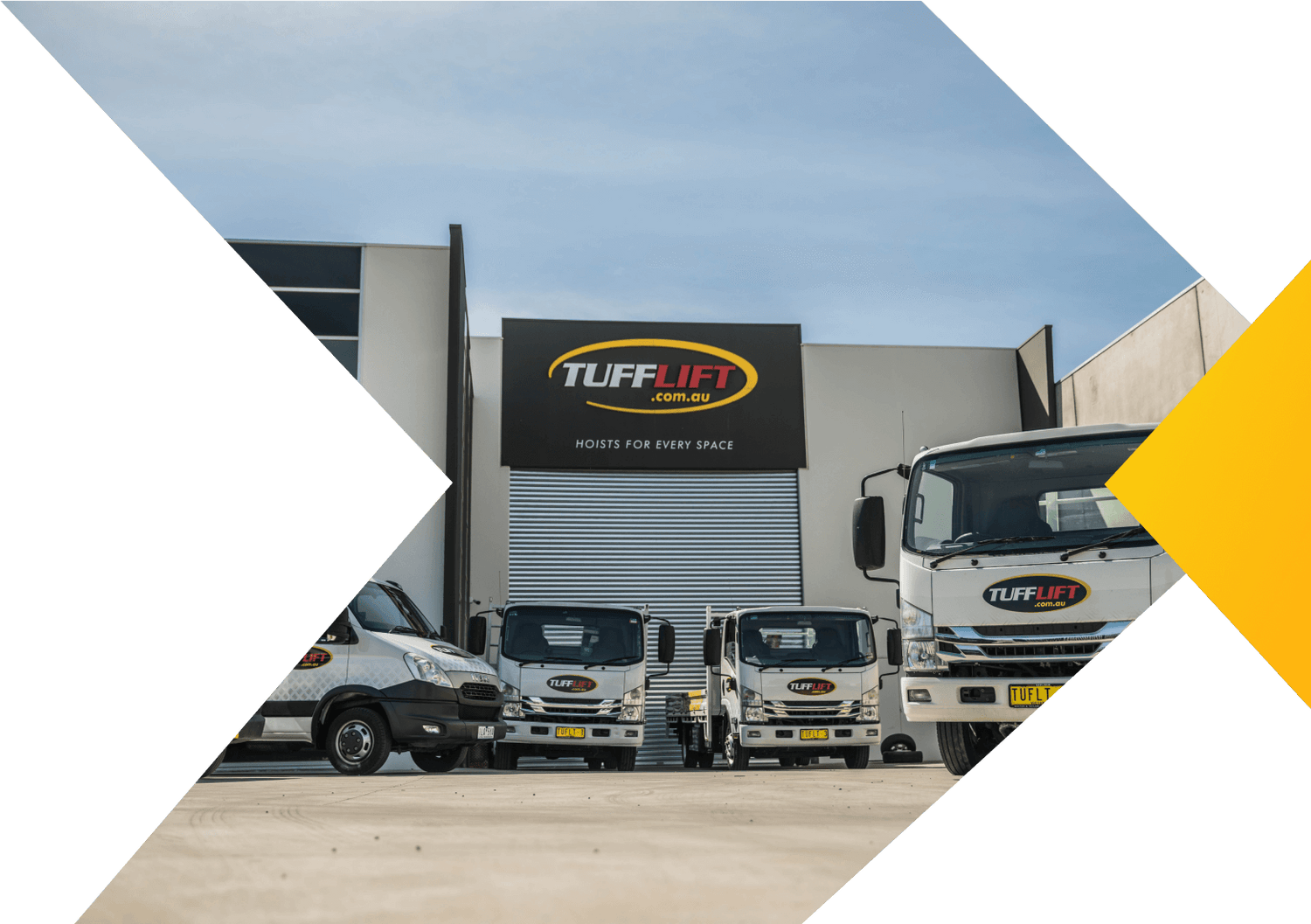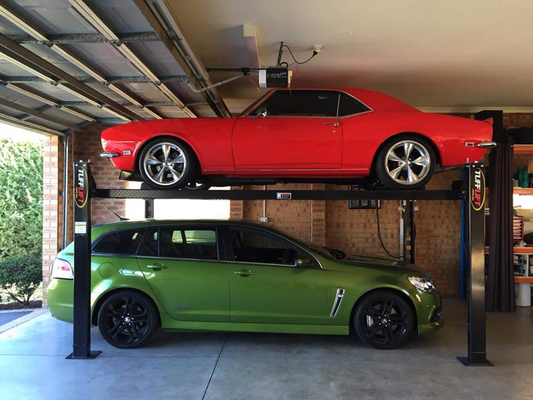The Ultimate Guide to a Wheel Aligner Machine
Share

Uneven tyre wear, vehicle pulling to one side, and steering wheel not straight are all signs of a wheel misalignment. It can make driving inefficient and potentially dangerous.
This is when a wheel alignment machine comes in handy.
It is used to measure and adjust the angles of a vehicle's wheels, ensuring they are properly positioned as per the manufacturer’s alignment specifications.
But how does a wheel aligner machine work, and what are the major benefits?
In this guide, we’ll tell you everything you need to know about these wheel alignment tools and why they are so important.
Improve vehicle performance, safety, and longevity with a 3D wheel alignment machine. Call Tufflift on1800 88 33 50 for more details.
What Is a Wheel Aligner?
Wheel alignment machines are specialised pieces of equipment used to measure and adjust the angles of the wheels on a car.
Modern wheel aligners use advanced sensors, cameras, and software to provide accurate measurements of camber, caster, and toe angles. The data is then displayed on a screen as easy-to-read diagnostics. This allows users to make precise adjustments if needed.
A wheel aligner is an essential tool for professional mechanics as well as DIY motoring enthusiasts with home garages.
How Do Wheel Alignment Machines Work?
Here’s a step-by-step look at how a portable wheel alignment machine works:
-
Preparing the Vehicle
- The vehicle is put on a hoist and checked for any worn suspension components or uneven tyre pressure that could affect the alignment.
-
Mounting Sensors or Targets
- Specialised 3D imaging cameras communicate with the wheel alignment machine, providing real-time data on wheel positioning.
-
Measuring Alignment Angles
- The machine measures three key alignment angles to determine if adjustments are needed:
- Camber – The inward or outward tilt of the wheels when viewed from the front. Excessive camber (whether positive camber or negative camber) can lead to uneven tyre wear.
- Caster – The angle of the steering axis when viewed from the side. Proper caster enhances steering stability and smooth handling.
- Toe – The angle at which the wheels point inward or outward when viewed from above. Incorrect toe settings can lead to tyre scrubbing and rapid wear.
- The machine measures three key alignment angles to determine if adjustments are needed:
-
Adjusting the Alignment
- Using the machine’s readings, the user makes adjustments to bring the wheels back to the manufacturer’s recommended angles.
-
Verifying and Finalising the Alignment
- Once adjustments are made, the alignment is rechecked to ensure accuracy. A final test drive should be performed to confirm proper handling and steering response.
Different Types of Wheel Alignment Machines
Not all wheel alignment equipment is created equal. Here’s a look at the three main types of alignment machines:
-
3D Alignment Machines
- The 3D wheel alignment system is the industry standard for precision and efficiency. These machines use high-resolution cameras and sophisticated imaging technology to provide fast results with pinpoint accuracy. They don’t rely on multiple sensors, reducing setup time and minimising errors.
-
CCD Alignment Machines
- CCD (charge-coupled device) alignment machines use cameras and sensors mounted on each wheel to measure angles. While they offer good results, the sensor setup is complex and increases the risk of calibration errors.
-
Laser Alignment Machines
- Laser alignment is one of the oldest methods, using manual laser beams and mirrors to gauge wheel angles. While still effective, the lack of automation means it requires more time and skill to operate correctly.
alignment is one of the oldest methods, using manual laser beams and mirrors to gauge wheel angles. While still effective, the lack of automation means it requires more time and skill to operate correctly.
Benefits of Using a Car Wheel Alignment Machine
- Compatible with Car Hoists – A wheel aligner machine can fit on 4-post hoists and scissor lifts.
- Quick and Easy – Its unique quick testing mode is easy to use and saves time. There’s no need to wait during rolling or caster swing.
- Accuracy – Unlike manual alignment methods, 3D wheel aligners automatically calculate wheel diameter, reducing the chance of errors.
- Optimal Vehicle Performance and Safety – Professional wheel alignment ensures improved handling and stability, making the car safer on the road.
- Tyre Longevity – Regular testing reduces tyre wear and suspension wear, extending the lifespan of your tyres.
- Fuel Efficiency – Proper alignment allows the vehicle to roll smoothly with less friction, requiring less fuel to maintain speed and stability.
- Compact – Its size is perfect for small workspaces or garages, helping save valuable space without compromising performance.
- Cost-effective – Investing in quality equipment upfront can save you money in the long run by reducing downtime, maintenance and costly tyre, suspension and steering repairs.
How to Choose the Right Wheel Alignment Tool
There are a few factors you need to consider when buying new auto wheel alignment tools:
-
Type of Vehicle
- Different alignment machines are designed for different-sized vehicles, from cars and trucks to heavy-duty vehicles. Make sure the model you choose is compatible with the types of vehicles you service most.
-
Accuracy and Ease of Use
- Precision matters. Look for a machine with high-resolution cameras, real-time digital displays, and user-friendly software that simplifies the process while delivering exact results.
-
Compatibility with ADAS
- Modern vehicles often include Advanced Driver Assistance Systems features like lane departure warnings, parking assistance and adaptive cruise control. Get an aligner that supports ADAS calibration to ensure you can service the latest vehicles without limitations.
-
Comprehensive Servicing Options
- Choose a brand that gives you access to technical support, training, and spare parts that can help extend the life of your machine and the vehicles you service.
Invest in a Quality Wheel Alignment Lift From Tufflift
Here at Tufflift, our advanced wheel alignment machines provide unmatched performance and efficiency.
Designed to meet the needs of commercial automotive workshops and private garages, they comply with Australian safety standards and come with a 12-month parts and labour warranty.
Regular upkeep and calibration of alignment machines are also crucial for sustained accuracy. So, you can trust our wheel alignment services and customer support team to assist you every step of the way, from installation to maintenance.
Tufflift is synonymous with reliability and durability. Our wheel aligners are the same. Get in touch today to find out more about our range.




